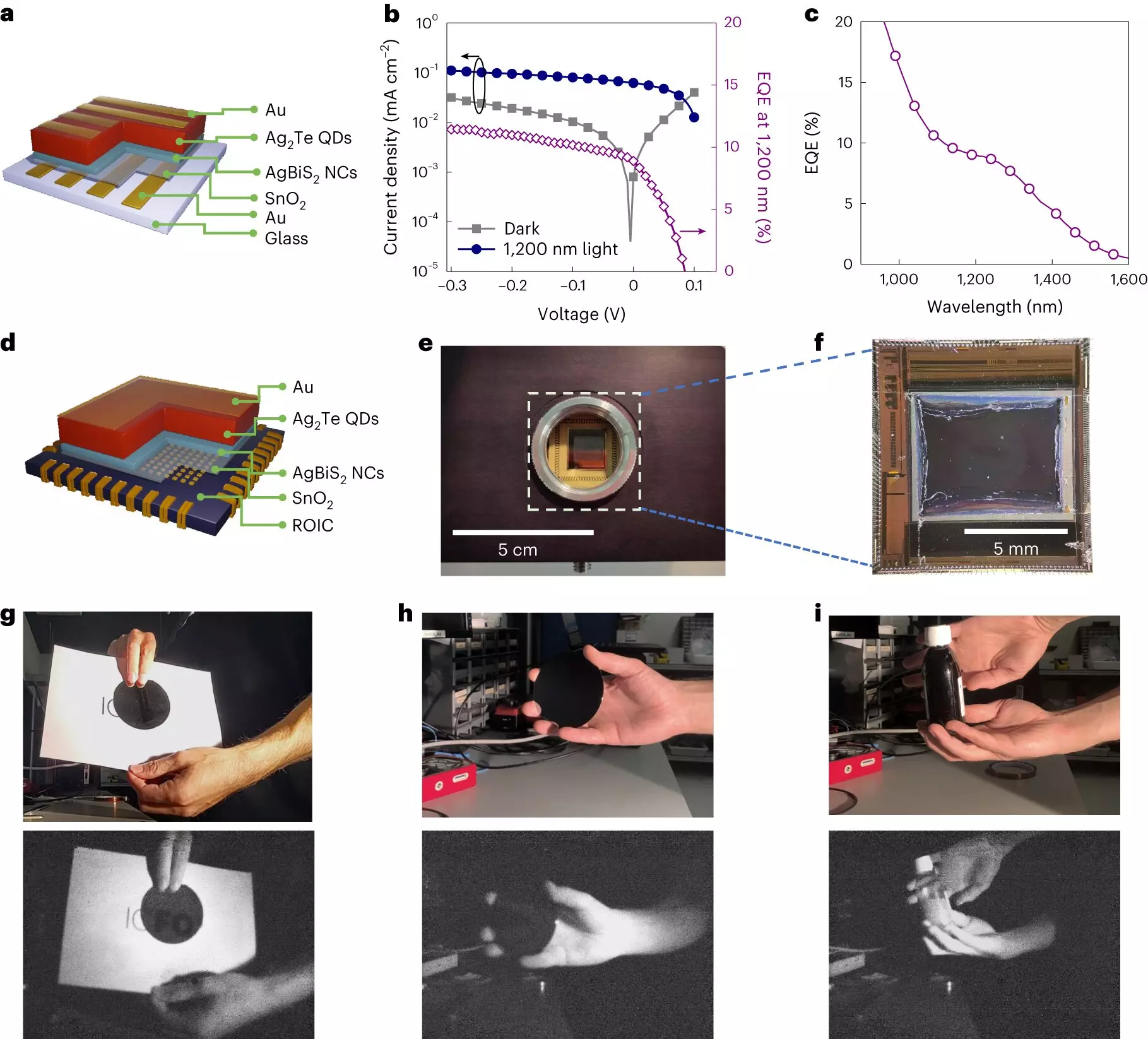Advancements in technology are constantly pushing the boundaries of what is possible in various industries, and shortwave infrared (SWIR) light is no exception. SWIR light, while invisible to the human eye, has the potential to revolutionize computer vision in applications such as service robotics, automotive, and consumer electronics. This article delves into a groundbreaking study published in Nature Photonics, where researchers have successfully developed high-performance infrared photodetectors and an SWIR image sensor based on non-toxic colloidal quantum dots. In doing so, they have paved the way for the widespread use of SWIR colloidal quantum dot technology.
One significant hurdle in utilizing SWIR-sensitive quantum dots for mass-market applications is the presence of heavy metals like lead or mercury. These metals are regulated due to their hazardous nature, making it challenging to integrate them into consumer electronic devices. However, the researchers at ICFO have found a solution to this problem by synthesizing non-toxic colloidal quantum dots, specifically silver telluride (Ag2Te).
The Synthesis of Non-Toxic Quantum Dots
During their investigation into synthesizing silver bismuth telluride nanocrystals, the researchers stumbled upon silver telluride (Ag2Te) as a by-product. They quickly realized its potential for SWIR photodetectors and image sensors and focused their efforts on developing a method to synthesize phosphine-free versions of silver telluride quantum dots. Phosphine was discovered to have a detrimental impact on the optoelectronic properties of the quantum dots relevant to photodetection. By using different phosphine-free complexes, the team successfully obtained quantum dots with excellent size distribution and excitonic peaks spanning a broad range of the spectrum.
To evaluate the performance of the newly synthesized quantum dots, the researchers fabricated a laboratory-scale photodetector. Initially, the photodiode exhibited low performance in sensing SWIR light. However, after incorporating a buffer layer, the photodetector’s performance significantly improved. The refined SWIR photodiode exhibited a spectral range from 350nm to 1,600nm, a linear dynamic range exceeding 118 dB, a -3dB bandwidth surpassing 110 kHz, and a room temperature detectivity of 1012 Jones. These performances rival those of heavy-metal-containing counterparts.
With the success of the heavy-metal-free quantum dot photodetector, the researchers took it a step further and partnered with Qurv, an ICFO spin-off, to develop a SWIR image sensor. They integrated the photodiode with a CMOS-based read-out integrated circuit (ROIC) focal plane array (FPA), creating a proof-of-concept, non-toxic SWIR quantum dot image sensor. To demonstrate the sensor’s capabilities, the researchers captured images of various objects under SWIR light. They were able to image the transmission of silicon wafers and visualize the contents of plastic bottles that were opaque in the visible light range.
The Potential of SWIR Technology
Accessing the SWIR spectrum at a low cost opens up a plethora of exciting applications in the consumer electronics industry. Improved vision systems for the automotive industry, even in adverse weather conditions, become possible. SWIR technology enables long-range light detection and ranging (LiDAR), three-dimensional imaging for automotive applications, as well as augmented reality and virtual reality experiences. Moreover, SWIR light in the range of 1.35-1.40 µm provides an eye-safe window with no background light interference, further enhancing its potential.
The researchers are not stopping at this achievement. They are dedicated to enhancing the performance of the photodiodes by engineering the layers comprising the photodetector device. Additionally, they plan to explore new surface chemistries for the Ag2Te quantum dots to improve their performance, as well as their thermal and environmental stability. With these advancements, the researchers aim to bring SWIR technology to the market, unlocking its full potential in an array of applications.
Overall, this study represents a significant breakthrough in SWIR technology, demonstrating the feasibility of non-toxic colloidal quantum dot-based image sensors. By overcoming the challenge of heavy metals and introducing a novel synthesis method, the researchers have propelled SWIR technology into the realm of mass-market applications, opening up exciting possibilities for the future.


Leave a Reply